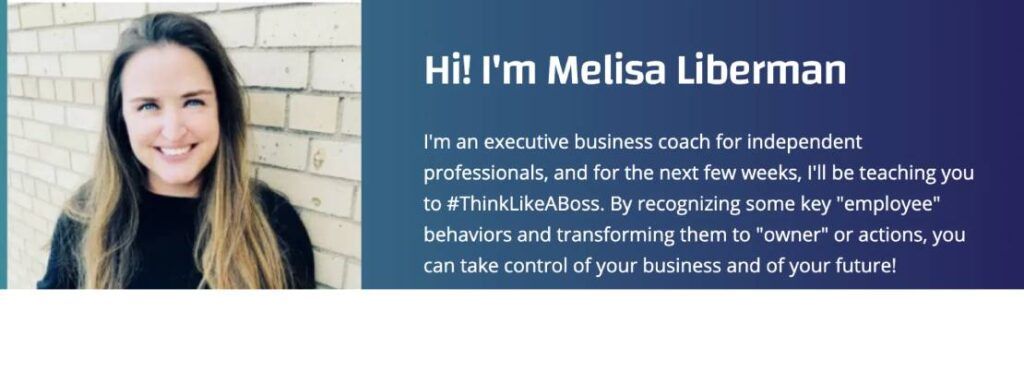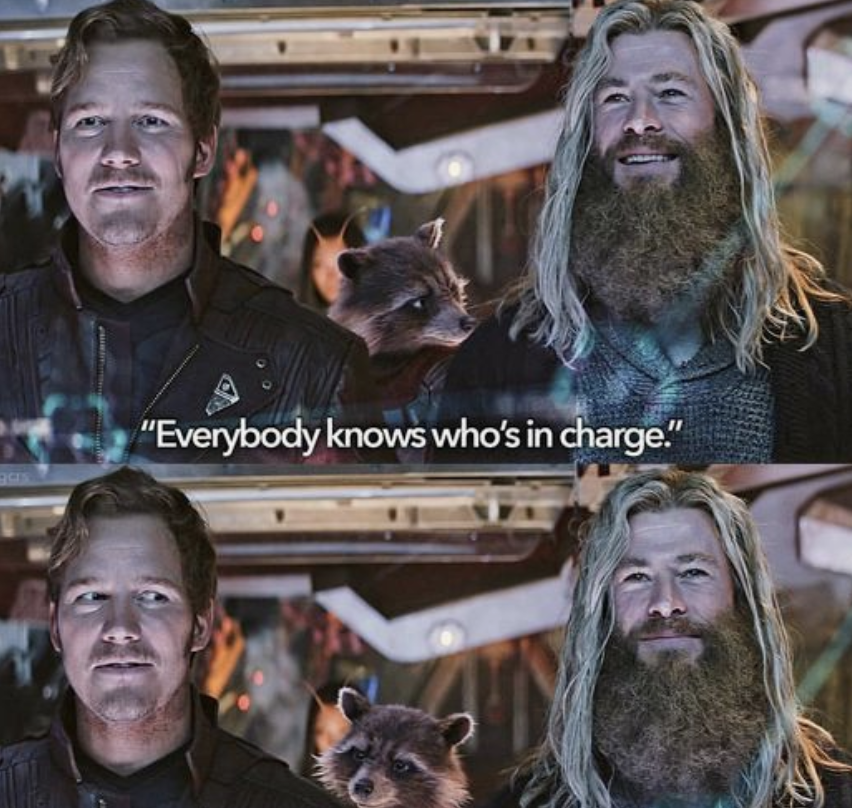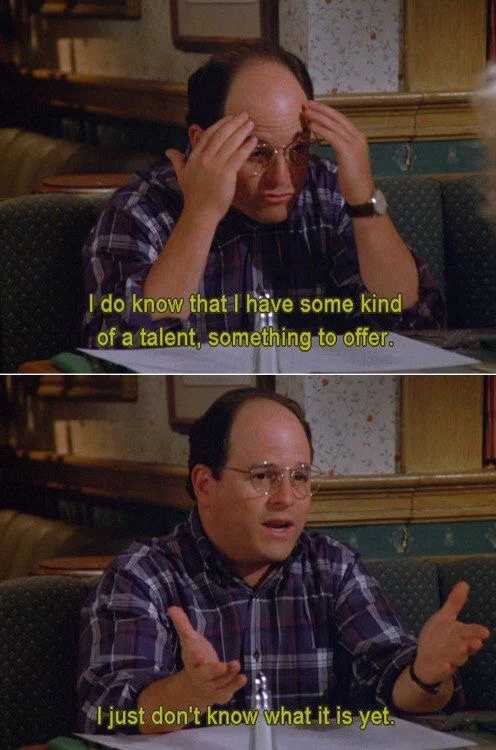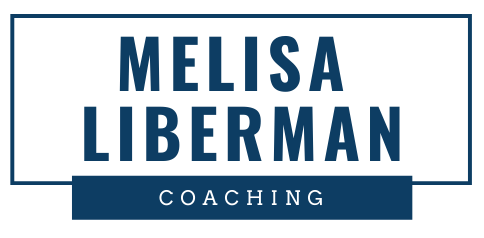#ThinkLikeABoss: The 5 Key Differences Between Searching for a New Job and Searching for Your Next Consulting Engagement

The 5 Adjustments to Make, To Maximize How Much You’re Paid as an Independent Consultant
Today in the Think Like a Boss series, we’re talking about the differences between searching for a new full-time job versus searching for your next consulting engagement.
This topic is important because understanding the nuances between a traditional job search and landing a consulting client, directly impacts how much you’re paid.
OK, so now that we’re talking about money, I hope I’ve piqued your interest.
In this post, we’ll dive into
- The purpose of a resume when you’re selling consulting vs. when you’re searching for a new job
- How applying to a new job differs from pursuing a new consulting engagement
- The difference between interviewing for a new full-time job and selling your consulting expertise
- How to manage negotiations when you’re finalizing a consulting SOW compared to negotiating your full-time offer
- The differences between starting a new, full-time role and effectively initiating a new consulting engagement
Let’s dive into each of these five differences one-by-one.
1. The purpose of a resume when you’re selling consulting vs. when you’re searching for a new job
Using the traditional resume and LinkedIn profile to “sell” yourself as a consultant sets a costly trap for you
Many consultants make the mistake of leveraging their resume as a key asset when they transition to selling their consulting services.
I recently had a client who was using the combination of his resume and LinkedIn profile as the primary sales tools in his consulting sales toolbelt.
This approach would have made sense if he was applying for a full-time role.
Hiring managers are accustomed to reviewing resumes and LinkedIn profiles as part of their vetting process.
But, as an independent consultant, if you try to sell consulting using a resume (like my client had been doing), you fall into a trap.
And this trap costs you a lot of money.
What is the trap?
The trap is that by using your resume and LinkedIn profile, you’re essentially selling yourself like you would as an employee.

And the hiring manager thinks they’re buying access to you.
In other words, you set up the rules of engagement from the outset such that the hiring manager thinks they’re buying your time.
And you end up getting relegated to an hourly rate right from the start.
You’ll make less money and spend more time doing it when your consulting engagements are set to a time-based (e.g., hourly) rate.
The shift: put your resume on the backburner when you’re selling your independent consulting services
The key to selling your consulting services is to shift from centering the process around selling you into making the process about the potential client.
To do this, you replace your resume with
- The value proposition for THEM, the potential client
- The results for THEM, the potential client
- The benefits to THEM, the potential client
- THEIR pain points that you’ll solve
You can use your resume as a supporting document, if you need it. But think of it as something for the appendix and not as the tool that you’ll use to lead a sales process.
2. How applying to a new job differs from pursuing a new consulting engagement
Uncovering potential consulting opportunities in the same way, you would a full-time role, leads you to under-earn
As we know, the traditional job search centers primarily around applying to job postings, networking and responding to inbound requests (e.g., recruiters).
When you follow this traditional approach to land a new consulting engagement, you uncover roles that fit into the “staff augmentation” bucket, which almost always pays you at a lower rate.
The shift: uncover new consulting opportunities from the independent consulting point-of-view
Instead of waiting on opportunities to become available, like a job posting or recruiter contact, they key is for you to take the lead in uncovering and creating opportunities for your business.
You might be asking, what does this look like?
Spend your business development time
- talking to your ideal potential clients
- talking to past clients, colleagues, and other people in your existing network
- meeting people who work for and/or partner with your ideal targeted clients

When done well, this will lead to you:
With this, you’re creating and uncovering opportunities that you can drive forward. You’re able to shift the conversation away from YOU selling yourself into a box the hiring manager is trying to fill and into a conversation where you’re helping the potential client see their pain points more clearly, zoom out to the bigger picture, and take time (which they rarely have) to see the bigger picture. And, with that, you kick off the sales process in a way that positions you as the expert and trusted guide for them.
- Uncovering unpublished opportunities that will pay you based on your value and ROI (vs. for your time)
- Helping potential clients see areas of opportunity (that you can help them address) they may not have recognized before meeting with you,
- Adding value to potential clients through strategic discussions and planning vs. reactive “staff-augmentation” type conversations, and
- Assisting them to build out a strong business case for their initiatives, a case where you’re naturally included as part of the solution
3. The difference between interviewing for a new full-time job and selling your consulting expertise
Treating a discussion about your consulting services as an “interview” will result in you leaving money on the table
When you approach selling your consulting services as the traditional interview process, you are again falling into the first two traps I described above — You’re selling YOU, instead of selling the value of what you do FOR THEM (the prospective buyer of your services).
You’re also abdicating your authority over to the manager, who typically sees themself in charge in this type of interview-style process. The hiring manager is used to being in the driver’s seat, asking the questions, and the “candidate” answering.
You end up leaving money on the table because the hiring manager is the one driving the conversation, and it typically becomes much more transactional in nature. For example, it’s through this type of process that the hiring manager sees you as someone who would be qualified to add capacity to their team. Capacity is one of the lowest common denominators, and your expertise is worth so much more!
When you allow this traditional process as a consultant, it automatically puts you into that bucket of “staff augmentation” and you become a commodity.
This type of interview-style conversation relegates you to someone who the hiring manager is assessing and determining how you would fit into their strategy.
The shift: take control to move away from an “interview-type” approach into a consultative conversation

When you’re selling your consulting services through a consultative approach, instead of via a traditional interview-type approach, you take the lead.
- You ask the questions.
- You get clear on what the buyer’s pain points are.
- You get clear on what the buyer’s ultimate goals and vision are.
- You get clear on why the buyer cares about solving this problem, why it matters.
- You get clear on why the buyer hasn’t solve the problem yet, what’s standing in his way.
- You listen and the buyer talks.
It’s a complete 180 from the typical interview you’re used to as a jobseeker.
But, when you’re able to make this shift, the prospective client is able to see how you understand the root of their problem and how to fix it.
Your value skyrockets.
And this shifts the conversation from one that’s tactical to one that’s strategic and ROI-based. As a result, you’ll set the stage to build your proposal and pricing around the benefits and outcomes instead of you and the hiring manager haggling over a “fair” hourly rate that fits into the hiring manager’s budget.
4. How to manage negotiations when you’re finalizing a consulting SOW compared to negotiating your full-time offer
The success of the negotiations over your consulting SOW hinges on who takes the lead
In a traditional job search, the hiring team typically takes the lead. They manage the process. If they want to hire us, they make an offer. Then, we counter and negotiate from there.
As an aside, there are ways to get more control when you’re searching for a full-time role, but that’s not what we’re here to talk about today.
We’re here to talk about how you are letting the potential buyer of your consulting services take the lead as they would in a typical hiring process, puts you in a bad position, both for your strategic positioning and also for your negotiating stance.
And the ultimate result?
They underpay you.
The shift: You take the lead when you’re selling and negotiating your consulting services
When you’re selling your consulting services, it’s imperative that you take the lead.
What does this mean?

- You ask the questions
- You uncover all the stakeholders and people who will influence whether or not you’re consulting services are purchased
- You clarify and pinpoint the next step
- You turn the potential buyer and/or stakeholders into your advisors, to help shepherd the process
- You write the proposal
- You drive the proposal process to a completion, which is either a yes we’re moving forward and a contract signature or a no, not right now
Yes, in other words, you flip the regular full-time process on its head, and you make the offer based on all the learnings you’ve gathered and solutions you’ve crafted.
You don’t wait for the client to make an offer.
You take the lead.
You make the offer through a proposal.
You lead the process to a closing decision, one way or the other.
In this way, the consulting buyer sees you as the expert, and the person who adds value to this process. And you’ll be compensated according to this elevated positioning.
5. The differences between starting a new, full-time role and effectively initiating a new consulting engagement
The difference between on-boarding as a new employee and on-boarding onto your consulting engagement will impact the level of influence and the perception of the value you bring to the table
Generally speaking, when you on-board as a new employee, your new manager usually takes the lead. They help you navigate the organization and either establish or co-establish your success criteria and objectives.

If you take this same approach as a consultant, waiting for your point-of-contact to initiate all the processes, you’re missing an opportunity to establish yourself as an autonomous, relationship-focused, expert.
Instead, you’re creating the perception that you’re waiting for direction from others.
And with that, your value (and your future potential compensation) diminishes as well.
The shift: as an independent consultant, you take the lead on your process for initiating a successful engagement
Don’t fall into the trap of letting the client lead the initiation of your consulting engagement.
Use the initial phase of your project to
- establish your credibility, authority and autonomy on the project
- To set the boundaries and expectations you want to establish, that will lead to the greatest results for your client while also protecting your own working style.
The Takeaway:
Let’s pull this together, so you can put this into action.
In summary, if you approach your consulting engagement as you would a full-time job search, you’ll end up under-earning and working more than you’d planned. You’ll be relegated to the type of “staff augmentation” type positioning instead of the expert, thought leader positioning that you’re capable of fulfilling, and being paid for in turn.
I shared 5 areas where you can take control of the process to land your next consulting client in a way that’s a shift from how you’d typically tackle a full-time job search:
- Put you and your resume on the backburner when you’re selling your independent consulting services; instead, make the process about the prospective client by facilitating a fact-finding mission about the prospective client, and their pain points, challenges, obstacles, goals and vision
- Uncover new consulting opportunities from the independent consulting point-of-view instead of from a job seeker’s traditional sources
- Take control replace the “interview-type” approach with a consultative conversation about the prospective client’s goals and not about you and your past experience
- Take the lead when you’re selling and negotiating your consulting services instead of letting the prospective client turn it into what they’re most familiar with, the typical interview and offer-based process
- And, after you land the consulting engagement, you take the lead on your process for initiating a successful engagement instead of letting the hiring manager treat the process as a typical on-boarding situation
If you execute on these 5 shifts, you’ll elevate yourself and land more lucrative and fulfilling consulting clients and drive elevated benefits, ROI and outcomes for them.
Don’t Miss Melisa’s Podcast on this Topic
About Melisa Liberman Coaching:

Melisa is a business growth coach who focuses on helping independent consultants double their revenue without sacrificing their personal lives. She’s created several successful independent consulting businesses of her own over the last 9 years and is passionate about helping her clients do the same. You can find her in the MBO app store and leverage special MBO preferred rates on her consulting programs and services.
Don’t Miss Melisa’s Other Articles:
Related Posts
Trending
Subscribe to our
blog
Get a weekly email of our latest posts sent straight to your inbox
Learn more about the MBO Platform
FOR INDEPENDENT
PROFESSIONALS
Start, run, and grow
your independent business with MBO
FOR
ENTERPRISES
Engage, scale, and optimize
your independent workforce


